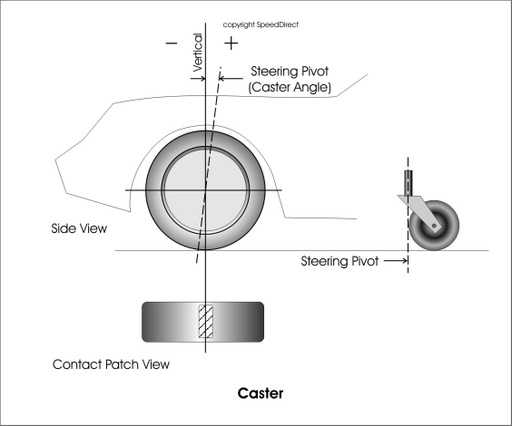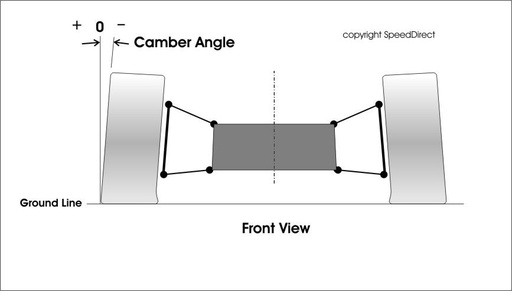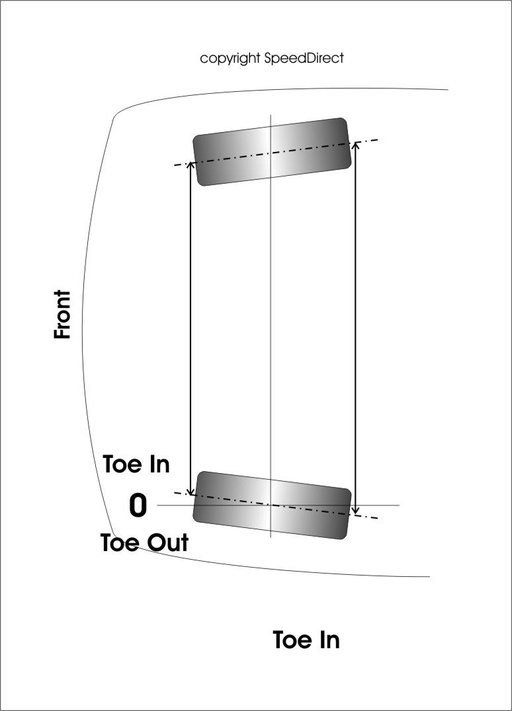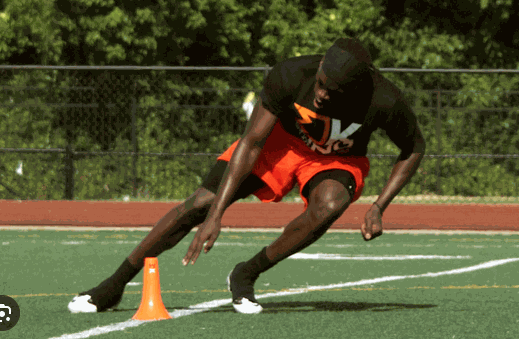Why Is Front End Alignment Important?

By: Rob Kinnan
Getting a front-end alignment seems like a dreary, annual necessity for automotive maintenance. To many people, it ranks right up there with an oil change. In some ways, a trip to the alignment shop is like a trip to the dentist to get your teeth cleaned. Besides that, it seems like some alignment shops are more interested in up-selling you things you really don’t need. But an alignment is more than just necessary for proper tire wear--did you know that an alignment plays a big part in how your car handles?
This is because of some basic geometric principals like camber, caster and toe-in can improve how your car “feels” but also how it handles. It is all about the kind of driving you want to do. If you are a boulevard cruiser and don’t care much about corners, then the factory settings are probably close but nowhere optimum. Plus, things have radically changed in tire profiles and compounds since our classics were new so those factory settings may be obsolete if you have modern rubber on your car. Let’s look at the alignment settings for a typical classic car’s front suspension and see what they do.
CASTER

This is what makes shopping cart wheels run straight, as illustrated in this figure. As you can see the steering pivot is in front of where the wheel contacts the ground in the direction of travel. This forces the wheel to always track straight when the cart is pushed forward or backward without wandering (depending on how beat up the shopping cart is-we’ve all been to the store and got the one cart that refuses to push straight). The same principal applies to the front end of most rear wheel-drive cars. The factory usually sets the angle near zero depending on the vehicle. This was fine when they ran those skinny balloon or bias-ply tires in the good old days.
Today the contact patch, the “footprint”, of the tire where it touches the road is much larger. Leaving the caster at or near zero will cause the car to wander and the steering to not want to return to center after a turn. This is because the contact patch is so much bigger on modern tires and no opposing force to “caster” the wheels straight like a shopping cart wheel. With positive caster (tipping the steering pivot angle toward the back of the car) the wheel now has a force ahead of the contact patch to align the wheel in the direction of travel.
CAMBER

This is the “tip” of the wheels as viewed from the front. Negative is inward tipping of the top of the wheel; positive is outward tipping as shown in the diagram. Negative camber is preferred since it will counteract the geometric tendency for the suspension to lift the contact patch as the body rolls during cornering.
Think of it this way: Imagine you’re running and make a hard turn to the left. Your right foot gets planted to the ground, and your right leg pushes you left to make the turn. Now consider how that leg looks: it’s angled from your foot on the ground up to your hip, pushing your body to the left. That’s what you need to best make a hard, fast switch in direction, right? The same thing happens to the tire with negative camber: the top of the right side tire is pointed in, making the contact patch largest on the ground and pushing the car to the left.
Look at how this runner’s leg is angled up to the right. This is a graphic real-world look at negative camber, making the runner turn left.
This setting can have the most dramatic impact on the car’s ability to hold front end traction in a corner. But it also can cause the most uneven tire wear over time. That is because the inside edge of both tires are loaded higher than the outside causing them to wear more.
The factory setup opts for zero to positive camber to keep the car in an understeer setup. This makes the front end tend to “push” or “wash out”. The factory lawyers like this because novice drivers are less likely to have the back end come around if they aggressively make a turn. If the car starts pushing, the natural tendency is to slow down, not try to force it through the corner. It results in decreased traction and a slower turning car, but one that is technically “safer” for people not skilled at aggressive driving.
TOE

This setting is the angle of the front wheels as viewed from above. Toe is determined by measuring the distance between the track of the wheels in front and in back. It can be toe out or toe in depending on how it is set. This setting is influenced by ride height. A car at high speed can have appreciable changes in the toe setting as the suspension is loaded by the aerodynamics of the car. Most cars are set with slight toe in, usually around 1/16-inch.
NEXT STEP - Suggested Settings
Here are some charts of suggested settings depending on your driving preferences. These are just starting points. In order to set them to optimum you will need to do some experimentation and determine what is best for your car.
|
1953 - 1962 Corvette
|
Camber
|
Caster
|
Toe
|
|
|
0 to -.25 deg. Neg. | 1.5 to 3 deg. Pos. |
1/16 to 1/8” toe in (0.131 to .264 deg. total) |
|
1963 - 1982 Corvette
|
Camber - Front | Camber - Rear |
Caster
|
Toe - Front | Toe - Rear |
| Street |
0 to -.25 deg. Neg. |
0 to -.5 deg. Neg. |
2.5 to 5 deg. Pos. |
0 to 1/8” toe in (0 to .28 deg. total) |
1/8” toe in (.28 deg. total) |
| Track |
-1 to -2 deg. Neg. |
-.75 to -1.5 deg. Neg. |
2.5 to 5 deg. Pos. | 0 to 1/16” toe out (0 to .14 deg. total out) |
1/8 to 1/4” toe in (0 to .14 deg. total) |
|
1967 - 1969 Camaro/Firebird & 1968 - 1974 Nova |
Camber
|
Caster
|
Toe
|
| Street |
0 to -.25 deg. Neg. |
2.5 to 5 deg. Pos. | 0 to 1/8” toe in (0 to .28 deg. total in) |
| Track |
-.5 to -2 deg. Neg. |
2.5 to 5 deg. Pos. | 0 to 1/8” toe in (0 to .28 deg. total in) |
| 1964 1/2 - 1970 Mustang | Camber | Caster | Toe |
| Street |
0 to -.25 deg. Neg. | 3 to 5 deg. Pos. | 0 to 1/8” toe in (0 to .28 deg. total in) |
| Track |
-.5 to -2 deg. Neg. | 3 to 5 deg. Pos. | 0 to 1/16” toe out (0 to .14 deg. total out) |
Summary
There are many variables to work with in all these alignment specs, but the key is to make the adjustments and systematically measure performance improvement. The results will be a car that is dialed in for the type of driving you do, not what the factory decided you might do.
